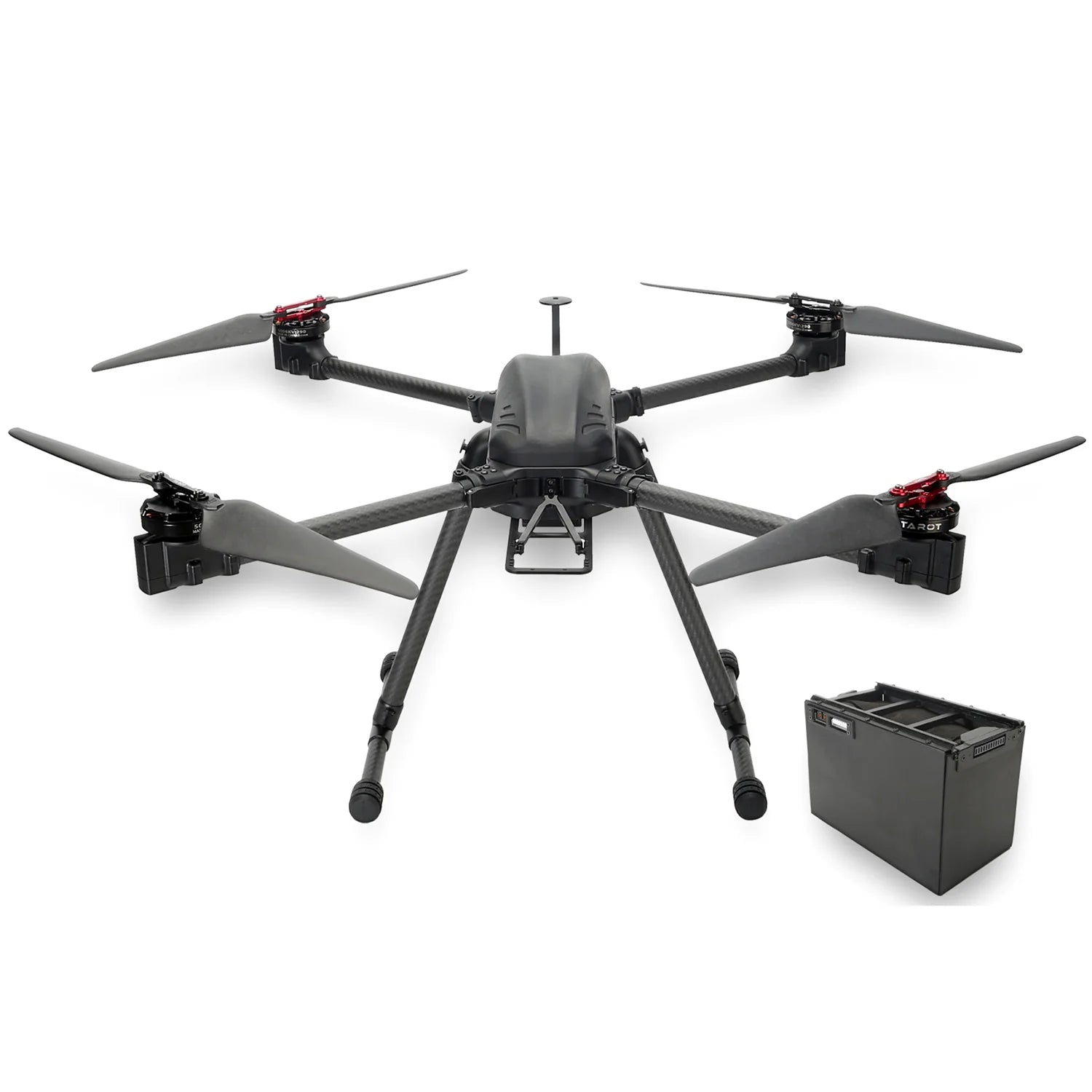In the last decade drones have seen changes fueled by rapid technological advancements and the development of innovative applications. Originally confined to the recreational sector, drones are now employed in commercial and industrial operations, as well as mapping, heavy lifting, and other applications.

Image credit: rcdrone.top
Industrial drones provide unbeatable efficiency security, precision and safety in demanding environments. These drones have become essential for industries like construction, mining and energy.
Unmatched Capabilities:
Rugged design: Built from super-durable materials that can withstand harsh elements of the weather, like high winds and heavy lifting.
Advanced Sensors Integrating LiDAR thermal imaging, LiDAR, as well as gas detection sensors for precise data collection in a variety of scenarios.
Autonomous Operation: able to conduct automated surveys and inspections, while reducing the need for human intervention in dangerous areas.
Reduce the time and costs associated with traditional methods for inspection and monitoring.
Key Applications:
Monitoring the structural quality of offshore platforms, bridges and pipelines.
Assessment of environmental impact on industrial zones
Performing volumetric analysis in open-pit mining.
The industry can minimize risks to operations by removing the manual inspections with drone technology.
Commercial Drones are a way to streamline business processes.
Commercial drones are revolutionizing the how businesses work. They provide innovative strategies to increase effectiveness and produce better results. They are widely used in various industries, including logistics, agriculture, and real estate.
Multi-Functional:
Smart Agriculture: Use multispectral imaging to monitor the health of crops, detect irrigation deficiencies and evaluate the condition of soil.
Dynamic Marketing Photographs of the highest quality to promote tourism and real estate as well as film production.
Drone-powered last-mile delivery can provide efficient and sustainable solutions for urban and rural areas.
Value-Driven Insights:
Data analysis and imaging tools that are cutting-edge provide useful information for businesses to improve processes and improve customer satisfaction.
Commercial drone is no longer just a tool, it’s a strategic asset that helps businesses stay competitive in an ever-evolving market landscape.
Mapping Drones – Setting new standards in precision
Mapping drones are excellent at generating 3D models with high resolution and precise maps, which makes them useful for urban design, environmental research and for disaster recovery.
Cutting-Edge Technology:
Photogrammetry and LiDAR: Provide incredible accuracy in topographic measuring and volumetric measurements.
High-Resolution imagery: Capture detailed infrastructure and terrain from low elevations.
Real-Time processing provides immediate access to crucial data for projects that are time-sensitive.
Applications Across Industries:
Planning urban landscapes and transportation networks.
Monitoring habitats for wildlife and ecosystems.
Assessment of damage and the planning of resources that will aid in recovery from disasters.
Due to their ability to quickly map difficult environments and accurately, drones mapping change the way we see and interact with the world.
Drones for Heavy Lift – Redefining Aerial Logistics
Heavy lift drones have been designed to transport large payloads, changing the way construction and logistics are conducted, and emergency response scenarios.
Robust Features
High Payload Capacity: Capable transporting loads that range from medical equipment to construction materials.
Precision Navigation: Equipped GPS and AI as well as obstacle detection systems to ensure precise delivery.
Custom Payload Adaptability: Designed to meet the specific needs of industry, from delivering humanitarian aid to the use of scientific instruments.
Notable Use Cases:
Transporting heavy equipment, tools and other equipment across vast construction sites.
Deploying critical supplies during natural disasters and emergencies.
Assisting in remote infrastructure development projects.
The unnoticed heroes of modern logistics are the heavy lift drones that are able to bridge the gap between efficiency and accessibility.
The Future of Drones: Where Innovation Meets Possibility
Drones are projected to grow in rapid speed with new applications and new trends are being developed.
Future Trends
Swarm Technology: Groups of drones collaborate to complete large-scale tasks.
AI and Machine Learning: Enhancing decision-making, navigation, and the ability to avoid obstacles.
GPS-based navigation: expanding the drone’s capabilities underground or in areas with dense obstructions.
Expanding the Applications
Healthcare Delivery Drones that transport vaccines, organs, and medical supplies to remote areas.
Sustainability Initiatives Monitoring deforestation. Monitoring wildlife. Assessing climate change impacts.
Research and education: Redefining the way researchers and scientists investigate difficult-to-access areas.
Conclusion
From enhancing productivity in industries to revolutionizing the way we look at logistics and environmental protection drones are crucial for defining modern solutions. Industrial Drones and Commercial Drones as well as Mapping Drones and Heavy Lift Drones all have proved to be beneficial across a range of industries. This has opened the way for the development of new and innovative applications.
Drones will be more significant with the advancement of technology, providing an array of solutions that can be scalable to industries and society. These incredible machines are set to transform technology and provide new possibilities.
